17 Vintage Tractor Photos That Absolutely Prove Farming Was Always Cool

There’s something undeniably captivating about vintage tractors—machines that are as rugged as they are charming. Sure, they were built for plowing fields and hauling hay, but these iron workhorses carry with them a powerful sense of nostalgia and craftsmanship that modern machines just can’t replicate.
With their bold lines, exposed engines, and worn-in paint jobs, they’re rolling testaments to a time when farming was more grit than GPS. These tractors weren’t just tools—they were part of the family. Generations of farmers trusted them through rain, mud, and harvests, patching them up with whatever parts were handy and giving them names like “Old Red” or “Betty.”
And let’s be honest—there’s something undeniably cool about watching one of these mechanical beasts fire up and chug across a field, sounding like it’s powered by sheer determination. In this collection, we’re celebrating 17 stunning vintage tractor photos that showcase just how iconic and surprisingly stylish old-school farming could be.
From rusted relics basking in golden-hour light to fully restored beauties that gleam like showroom pieces, each one tells a story of hard work, heritage, and horsepower. Ready to roll through rural history? Let’s take a scenic drive into the world of classic tractors!
1. John Deere Model D (1923)
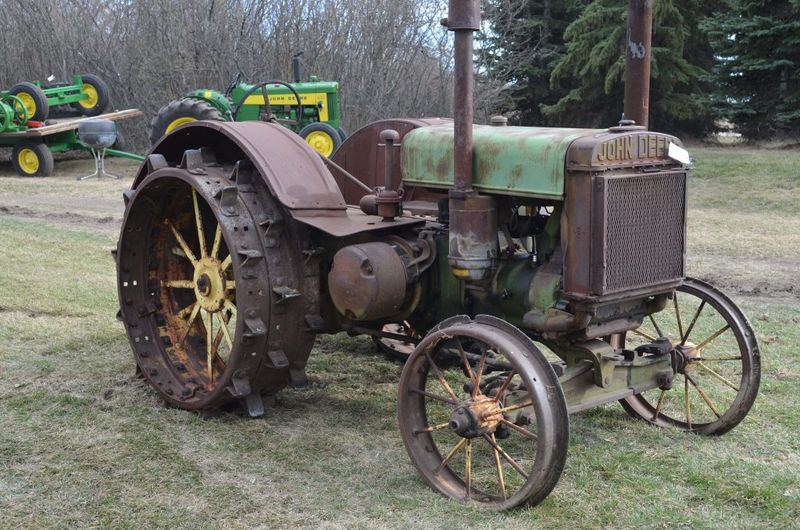
First up on our journey down the tractor timeline is the John Deere Model D from 1923. This iconic machine was a powerhouse in its day, and frankly, it still cuts a fine figure. Known for its durability, the Model D roared to life with a two-cylinder engine that was revolutionary for its time. My grandpa used to say it was built like a tank but moved like a dream on the fields.
Despite its age, the Model D is a testament to the ingenuity of early tractor design. It was rugged, reliable, and remarkably efficient. Farmers could trust it to get the job done, no questions asked. It’s no wonder that stories of its endurance are still shared among tractor enthusiasts.
Did you know? The Model D was so successful that it remained in production for almost 30 years! Talk about a legacy. If you ever have the chance to see one in person, take a moment to appreciate the harmonious blend of function and form that defined an era in farming.
2. Fordson Model F (1917)
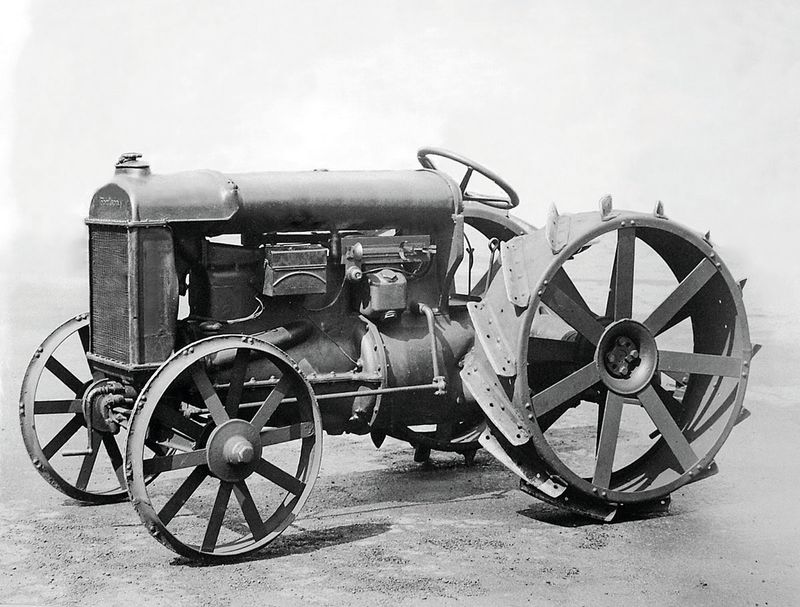
Next, let’s talk about the Fordson Model F from 1917. This little marvel revolutionized small-scale farming, and it’s easy to see why. With Henry Ford’s innovative mass-production techniques, the Fordson F was affordable and accessible to farmers everywhere.
Its lightweight design was a game-changer, allowing it to tackle tough fieldwork without breaking a sweat. My neighbor’s uncle had one, and he always boasted about its ability to plow through just about anything. It was the tractor equivalent of a Swiss Army knife.
Ah, the nostalgia of watching it chug along, the engine humming like a lullaby of progress. It’s no wonder that the Fordson F holds a special place in the annals of farming history. Picture it now, in all its glory, bringing innovation to fields far and wide.
3. Farmall Regular (1924)
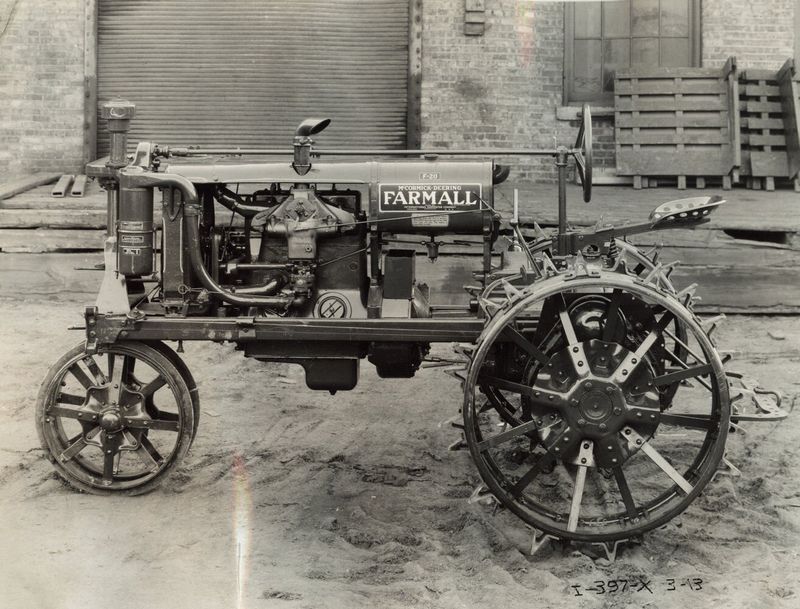
The Farmall Regular of 1924 was truly ahead of its time. Designed specifically for row-crop farming, its tricycle design allowed farmers to zigzag between rows like a pro slalom skier. My dad often referred to it as the ‘Ballet Dancer of Tractors.’
Its ability to manoeuvre without damaging crops was nothing short of revolutionary, making it a farmer’s best friend. I remember the stories of old-timers who marveled at how it transformed their farming practices.
Fun fact: The Farmall Regular was among the first to introduce the concept of all-purpose tractors. It embodied versatility and efficiency, setting the stage for future agricultural innovations. To see one in action is to witness the elegance and practicality of vintage engineering.
4. Massey-Harris 444 (1956-1958)
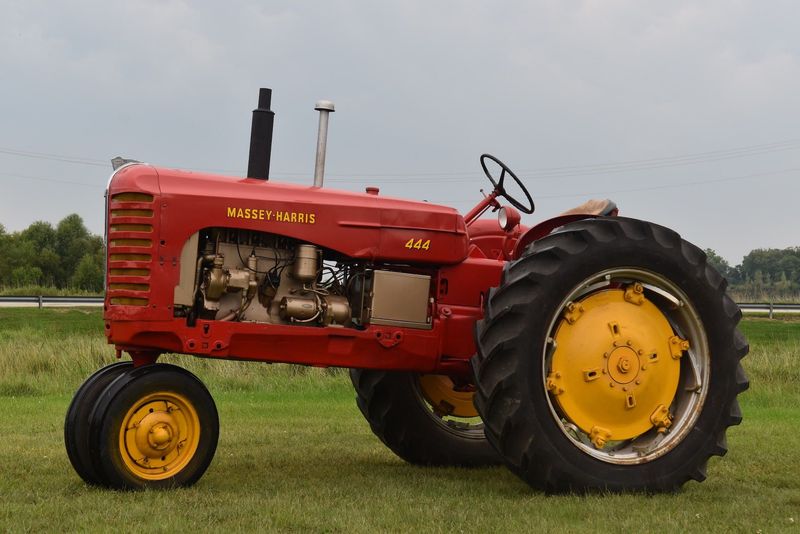
Introducing the Massey-Harris 444 from the late 1950s – a tractor with a personality as distinct as its design. With a single front wheel and propane fuel, it practically screams ‘Look at me!’ It was a gem of its era and a symbol of industrial flair.
This tractor wasn’t just about looks, though. The Massey-Harris 444 boasted a full 3-point hitch, making it a versatile tool for various farming tasks. I once stumbled upon one at a vintage tractor show, and let me tell you, it exuded charm and confidence.
The 444 marked a unique chapter in Massey-Harris’s history, showcasing innovation that was both eye-catching and functional. It’s these little quirks that make old tractors so endlessly fascinating.
5. Ferguson TO-35 (1954-1960)
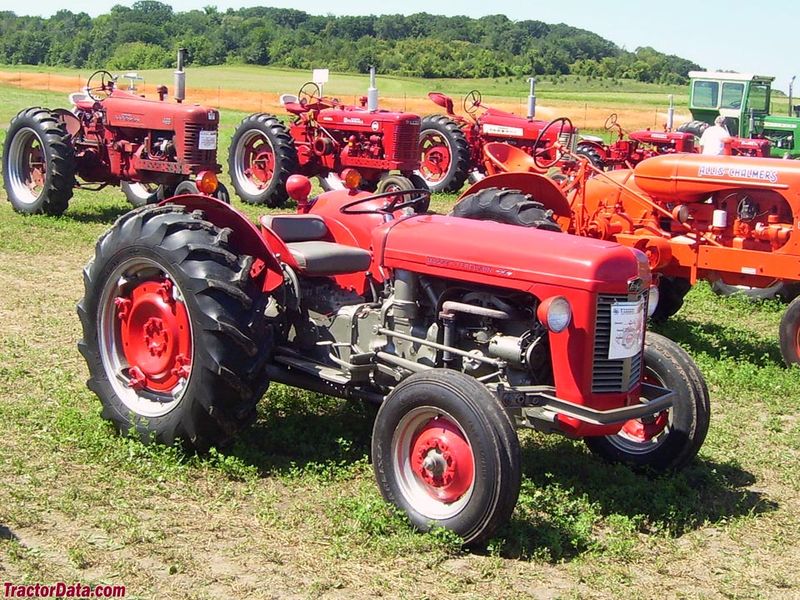
Say hello to the Ferguson TO-35, the workhorse that just wouldn’t quit. This tractor, produced from 1954 to 1960, was the reliable steed that farmers could always count on. You might say it was the ‘Old Reliable’ of tractors, earning its keep on countless farms.
Known for its versatility, the Ferguson TO-35 handled everything from plowing to planting with grace and ease. My uncle had one, and he swore by its dependability, claiming it was as trustworthy as the sunrise.
Even today, you’ll find some of these tractors still in operation, a testament to their robust construction and timeless functionality. They say legends never die, and in the world of vintage tractors, the Ferguson TO-35 certainly lives on.
6. Oliver 70 (1935-1948)
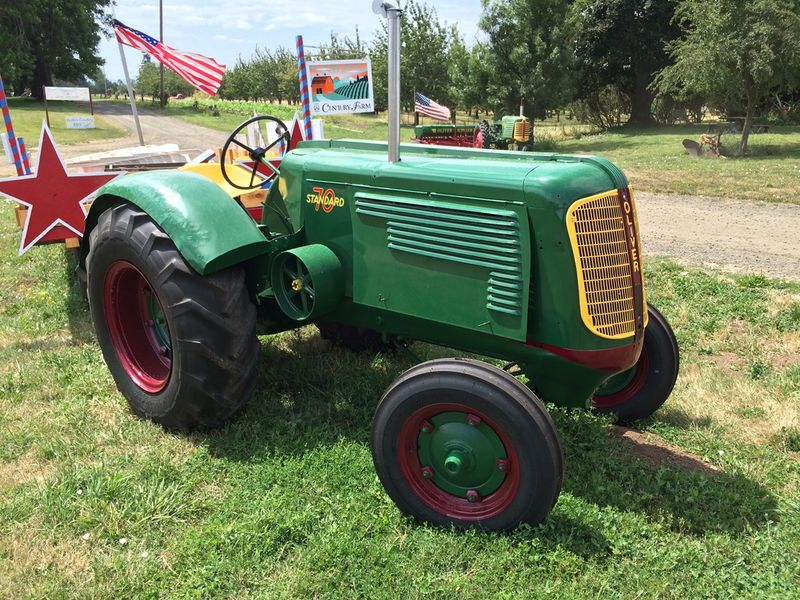
The Oliver 70 is an Art Deco masterpiece on wheels. Built between 1935 and 1948, it looks more like a piece of art than a farming machine. Streamlined and stylish, this tractor was the epitome of agricultural elegance.
My favorite memory of an Oliver 70 involves a neighbor who lovingly restored one to its former glory. Watching it roll by was like witnessing a parade of nostalgia and innovation wrapped into one.
Functionally, it was ahead of its time, with innovations that enhanced both performance and comfort for the farmer. If tractors could strut their stuff on a catwalk, the Oliver 70 would lead the charge, leaving a trail of awed onlookers in its wake.
7. Allis-Chalmers WD-45 (1953)
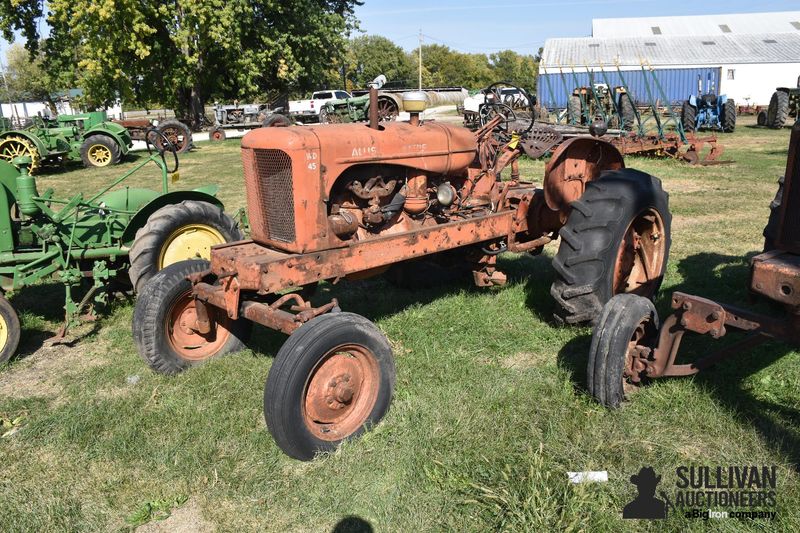
Allis-Chalmers WD-45, introduced in 1953, was a powerhouse among tractors. Known for its vibrant orange color, it was as eye-catching as it was effective. My grandfather told tales of how it brought a burst of energy to the fields.
The WD-45 was equipped with a power-adjustable rear wheel rim, an innovation that provided unmatched flexibility for the task at hand. This was the tractor that turned heads and tilled soil with equal aplomb.
For those who remember it, the WD-45 symbolizes a time when machinery started to transform the landscape of farming. It wasn’t just a tractor; it was a herald of progress and possibility.
8. Minneapolis-Moline UDLX Comfortractor (1938)
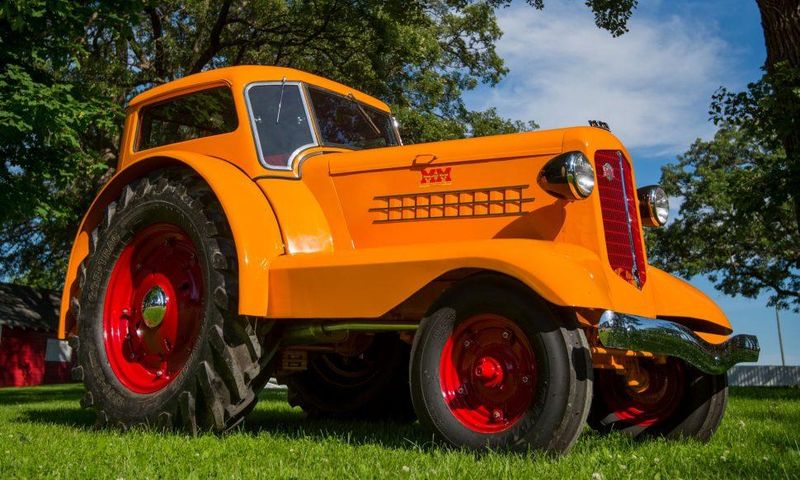
The Minneapolis-Moline UDLX Comfortractor of 1938 was unlike any tractor before or since. Imagine a luxury car crossed with a tractor, and you’ve got the idea. It was the Rolls-Royce of the farming world, with comforts never before seen in a field.
This tractor was about more than just plowing—it was about riding in style. Enclosed cabs, heating, and even a radio made it the talk of the town. My great-uncle would marvel at its ingenuity and often dream of taking it for a Sunday drive.
Though it was ahead of its time, the UDLX was a rare beast, with only a few hundred ever made. Today, it’s a collector’s dream, symbolizing the fusion of utility and luxury.
9. David Brown Cropmaster (1947-1953)
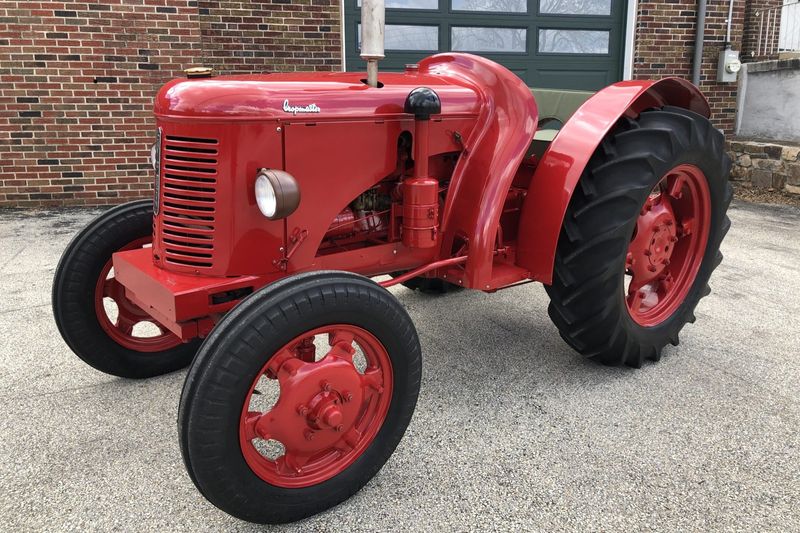
The David Brown Cropmaster, produced between 1947 and 1953, was a tractor that stood out for its refined engineering and practical design. It was the dependable friend you could always rely on to get the job done.
I recall stories of my neighbor’s Cropmaster pulling double duty during harvest season, never faltering. Its sturdy build and reliable performance made it a favorite among farmers.
This tractor encapsulated the spirit of post-war innovation, bringing efficiency and reliability to the forefront of farming technology. If there was a tractor hall of fame, the Cropmaster would surely be inducted.
10. International Harvester Farmall Cub (1947-1979)

The International Harvester Farmall Cub was the little tractor that could. Made between 1947 and 1979, it was small but mighty, perfect for the smaller farm or garden.
Its compact size made it incredibly agile, like a farmhand with a pep in its step. My cousin had one for his hobby farm, and it was always a pleasure to watch it weave its magic.
Affordable and efficient, the Farmall Cub brought mechanization to the masses, proving that even the smallest tractors could leave a big impression. It’s a reminder that good things come in small packages.
11. Case Model L (1929-1940)
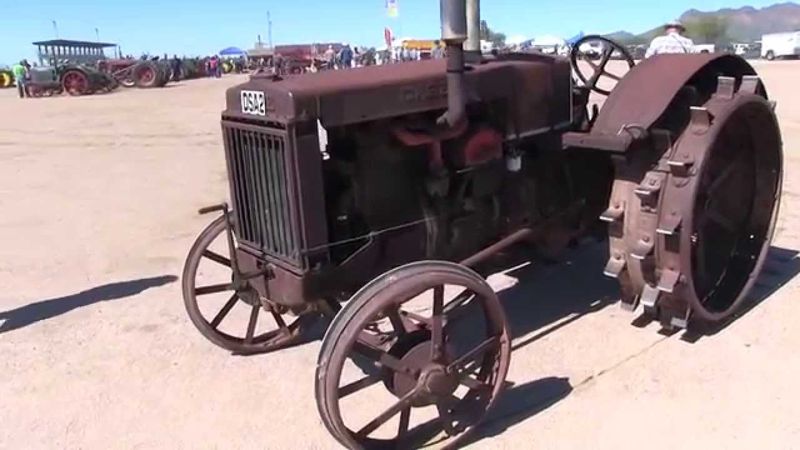
The Case Model L was a titan of the fields from 1929 to 1940. Known for its rugged durability, it was the kind of tractor that seemed almost indestructible.
Farmers loved its powerful engine and no-nonsense design, which could handle heavy loads without complaint. My great-grandfather would often recount how it never backed down from a challenge.
Even today, the Case Model L remains a symbol of resilience and hard work. It was the strong, silent type of tractor, doing its job with quiet dignity and strength.
12. Ford 8N (1947-1952)
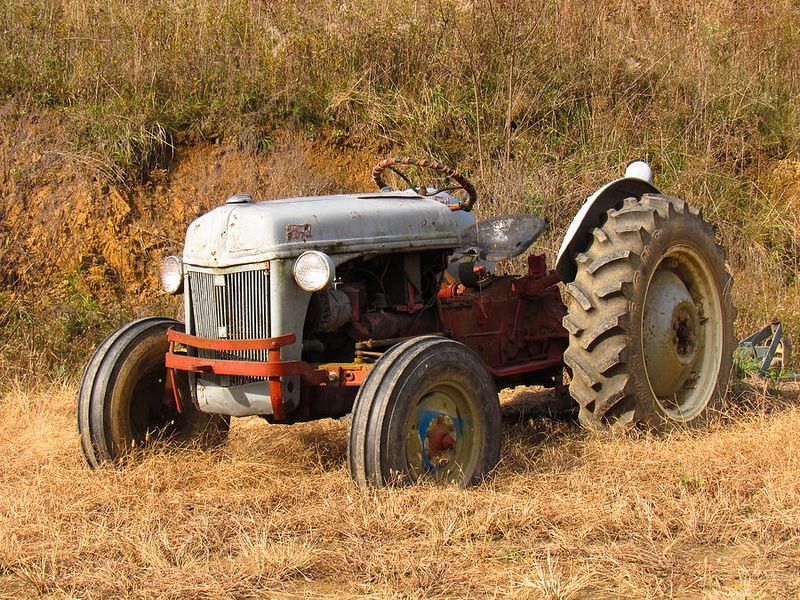
The Ford 8N, produced from 1947 to 1952, was a tractor that practically defined its era. Famous for its grey and red color scheme, it was as iconic as they come.
With a four-speed transmission and improved hydraulics, it was a dream to operate. My dad often said it was as smooth as butter, gliding through fields with ease.
The 8N represented a leap forward in tractor technology, making farming more efficient and less labor-intensive. Its legacy endures, a testament to the power of innovation.
13. Massey Ferguson 135 (1964-1975)

The Massey Ferguson 135, produced from 1964 to 1975, is a tractor that many remember fondly. Known for its reliability and ease of use, it became a staple on farms around the world.
With a straightforward design and powerful engine, the 135 was both practical and efficient. I recall hearing about its ability to tackle any task without breaking a sweat.
Even today, many are still in service, a testament to their enduring quality. The Massey Ferguson 135 truly was the workhorse of its generation.
14. John Deere 4020 (1963-1972)

The John Deere 4020, made from 1963 to 1972, was more than just a tractor; it was a powerhouse of performance. Famous for its diesel engine and Synchro-Range transmission, it set new standards for farm machinery.
My uncle had a 4020, and he always praised its ability to handle large-scale operations with finesse. It was the go-to tractor for big jobs on the farm.
Its blend of power and reliability made it a favorite among farmers, a symbol of progress and efficiency that defined a decade.
15. Steiger Tiger KP-525 (1978)
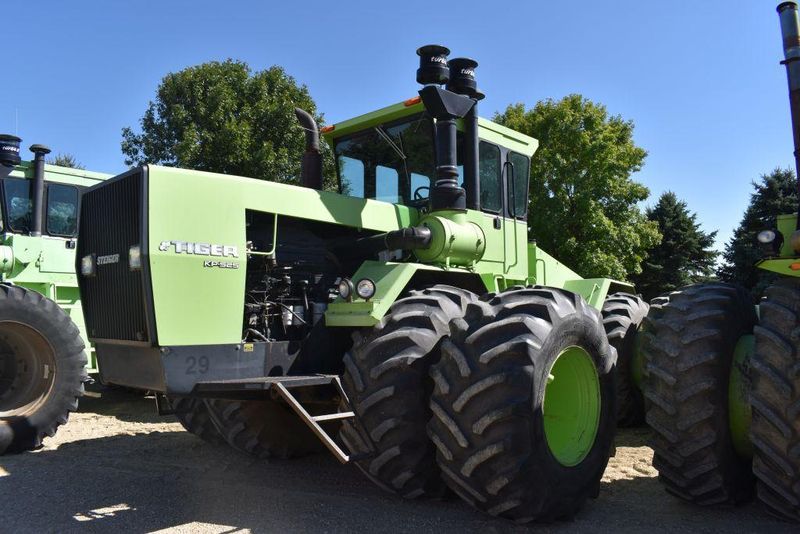
The Steiger Tiger KP-525, introduced in 1978, was a beast of a machine. Known for its massive size and incredible power, it was the tractor for those who needed serious muscle.
This was the king of the tractors, commanding respect and admiration wherever it went. My aunt often joked that it was the ‘Gentle Giant’ of the farm.
Built for heavy-duty work, the Tiger KP-525 was all about getting the big jobs done efficiently. It remains a symbol of power and progress in the world of agriculture.
16. Lanz Bulldog D9506 (1950s)
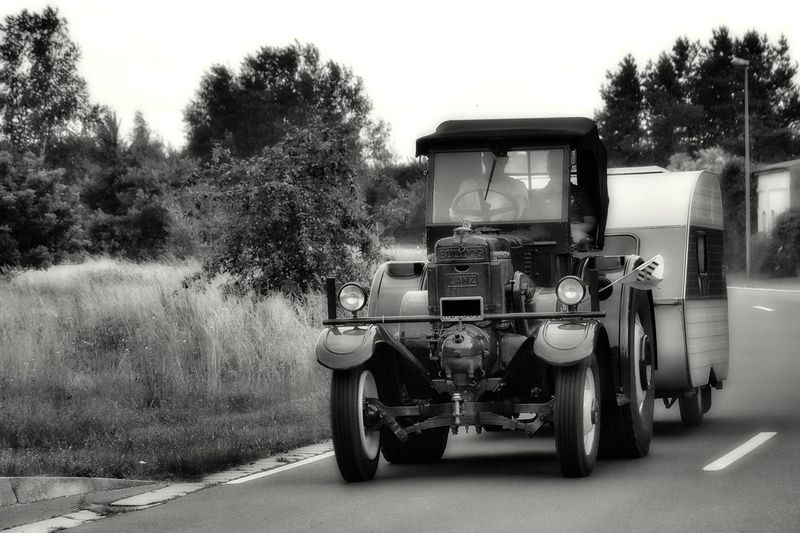
The Lanz Bulldog D9506 from the 1950s was a tractor that oozed character and charm. Known for its single-cylinder engine, it was as unique as they come.
Its iconic ‘pop-pop’ sound was music to the ears of many a farmer, signaling both reliability and strength. My grandfather always said it sounded like the heartbeat of the farm.
This tractor was a staple in its day, offering simplicity and strength that were unmatched. It’s a reminder of a time when farming was as much about the journey as the destination.
17. Fiat 411R (1958)
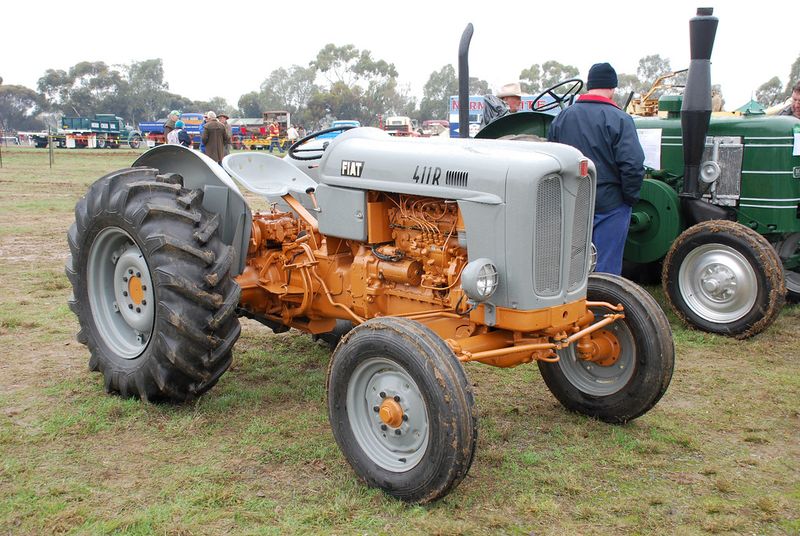
The Fiat 411R, introduced in 1958, brought a touch of Italian flair to the farming world. With its sleek lines and efficient engine, it combined style with substance.
My neighbor imported one from Italy, and it was the talk of the town. It worked like a charm and looked good doing it.
The 411R was not just about aesthetics; it was a capable machine that handled daily tasks with ease. It remains a beloved piece of agricultural history, embodying the spirit of innovation and design.
